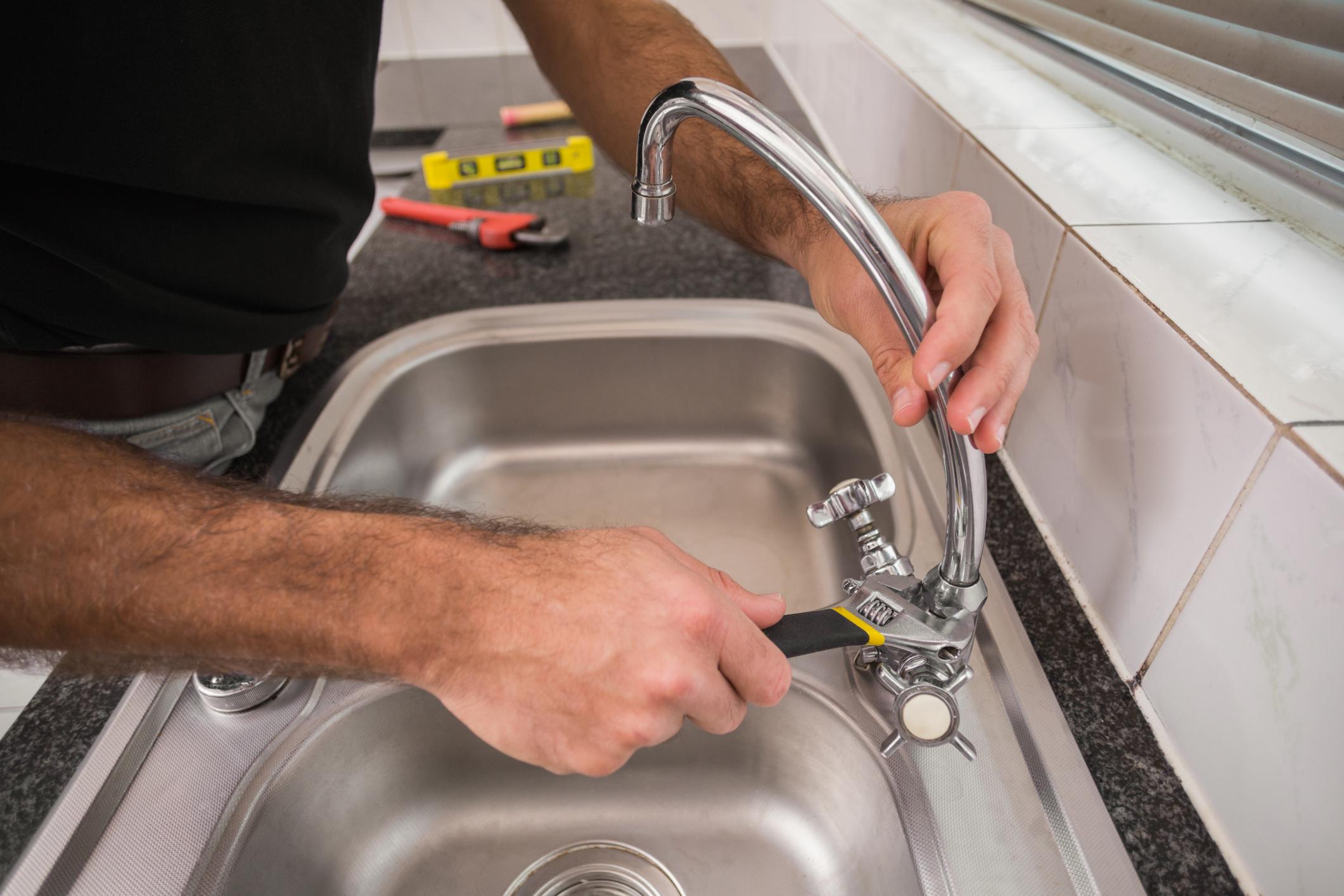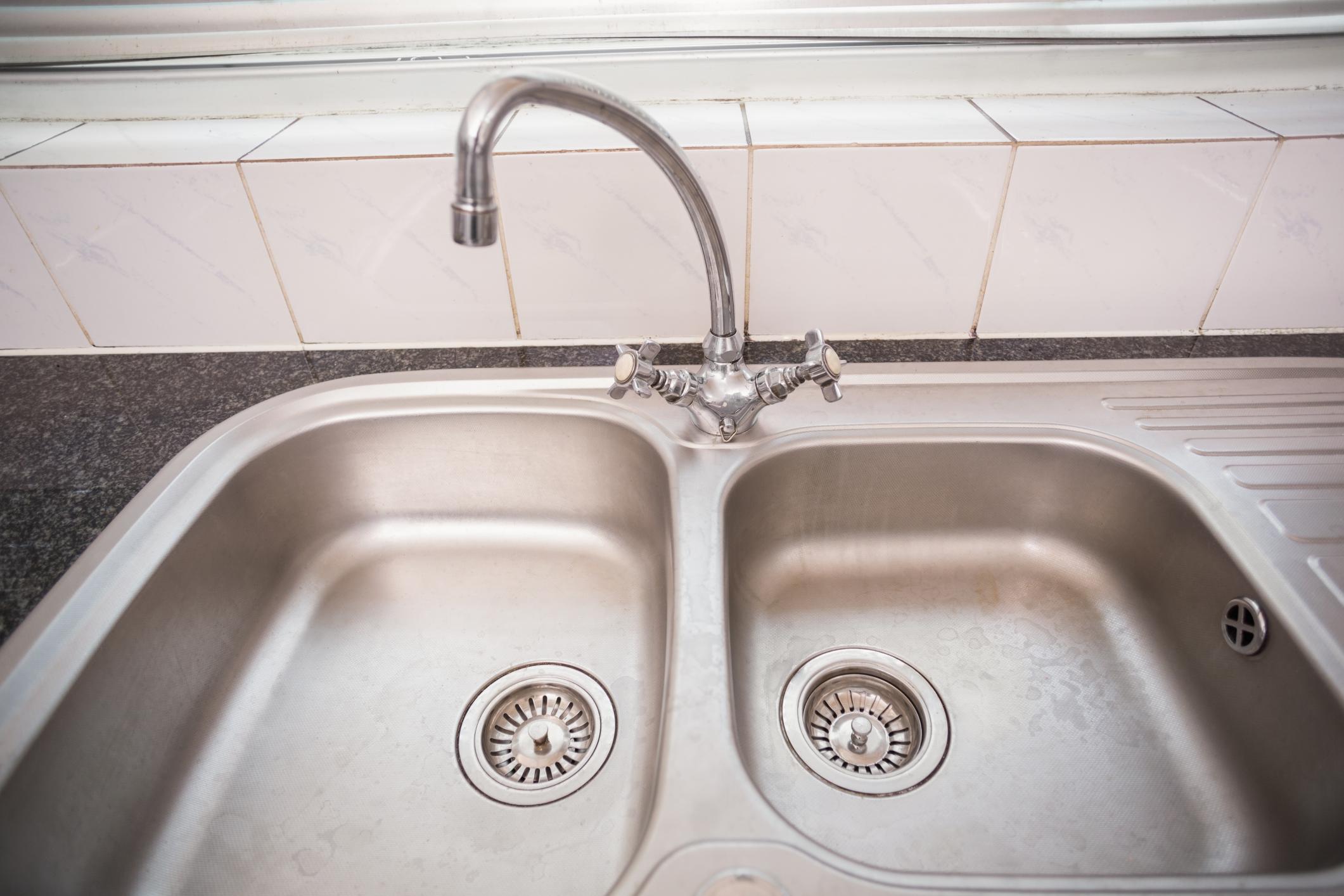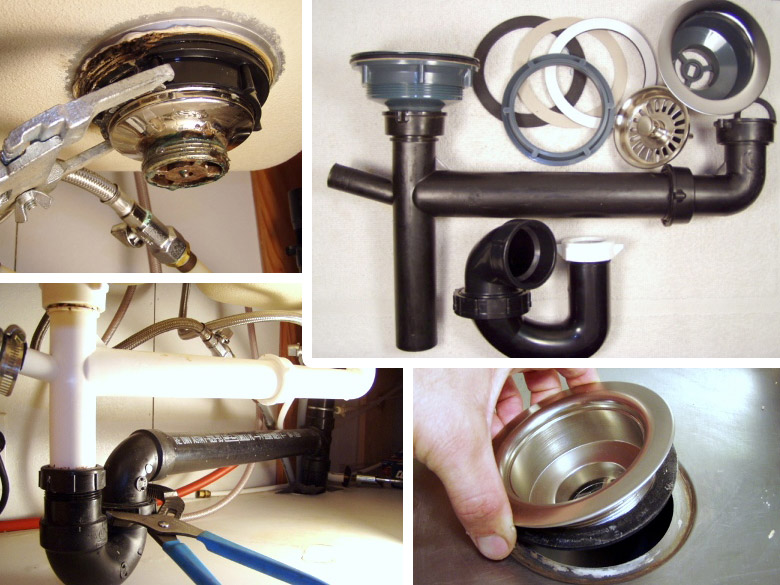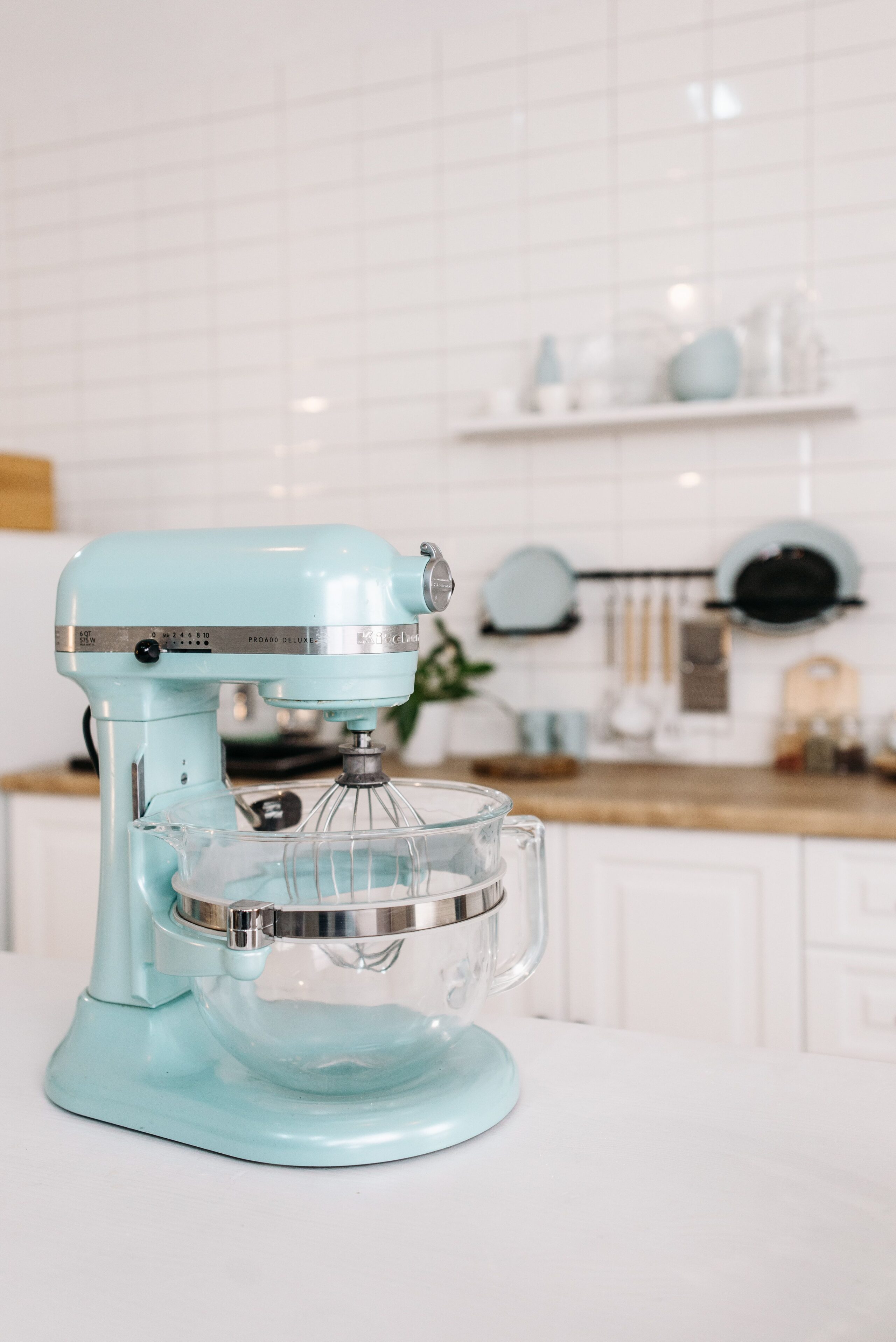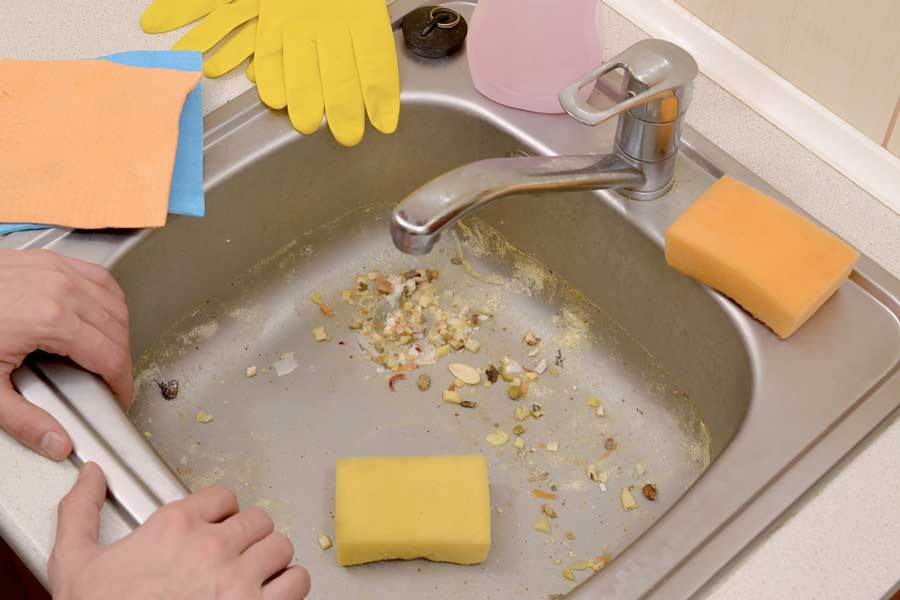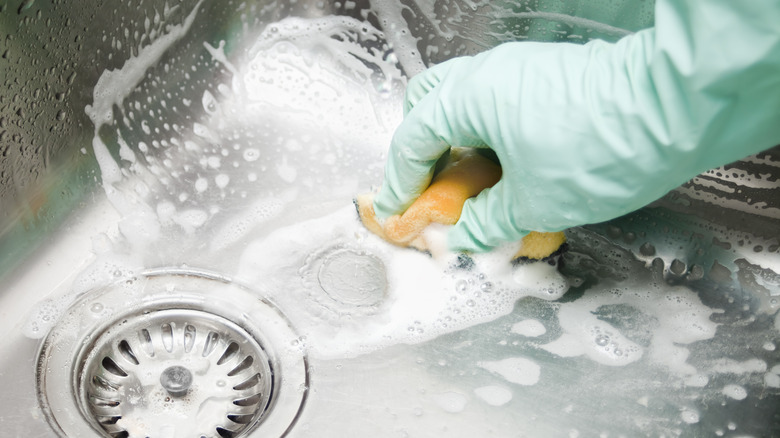If you have a kitchen sink with a spray head, you may have encountered the issue of not being able to turn it off. This can be frustrating and wasteful, as water continues to flow even when you're not using the spray function. But don't worry, there are some simple steps you can take to fix this problem and get your spray head to turn off properly. To start, you'll need to locate the valve that controls the water flow to your kitchen sink spray head. This is usually located under the sink, either on the wall or on the main water line. Once you find the valve, turn it clockwise to shut off the water supply to the spray head. Next, you'll want to check the spray head itself. Sometimes, debris or mineral buildup can cause the spray head to get stuck in the on position. Use a pair of pliers to unscrew the spray head from the hose and inspect it for any clogs or buildup. Clean out any debris and reattach the spray head to the hose. If the spray head still won't turn off, you may need to replace it altogether. This is a simple process that involves unscrewing the old spray head and screwing on a new one in its place. Just make sure to choose a spray head that is compatible with your sink and hose.How to Turn Off a Kitchen Sink Spray Head
If your kitchen sink spray head is old or damaged, it may be time to replace it. This is a simple process that you can do yourself without the need for a plumber. First, you'll need to purchase a new spray head that is compatible with your sink and hose. Once you have the new spray head, turn off the water supply to the sink using the valve as mentioned above. Then, use a pair of pliers to unscrew the old spray head from the hose. Take note of how the old spray head was attached so you can properly attach the new one. Attach the new spray head to the hose and use the pliers to tighten it securely. Turn the water supply back on and test the new spray head to make sure it is functioning properly.How to Replace a Kitchen Sink Spray Head
A leaking kitchen sink spray head is not only annoying, but it can also result in wasted water and higher water bills. The cause of the leak can vary, but most often it is due to a worn out or damaged seal. Luckily, this is a quick and easy fix. Start by turning off the water supply to the sink using the valve. Then, unscrew the spray head from the hose and inspect the seal. If it is worn or damaged, replace it with a new one. You can find replacement seals at most hardware stores. Once you have replaced the seal, reattach the spray head to the hose and turn the water supply back on. Test the spray head to make sure the leak has been fixed.How to Fix a Leaking Kitchen Sink Spray Head
Maintaining a clean kitchen sink spray head is important for its functionality and longevity. Over time, mineral deposits and debris can build up and clog the spray holes, resulting in reduced water flow and poor performance. Cleaning the spray head is a simple process that can be done in a few easy steps. Start by unscrewing the spray head from the hose and soaking it in a mixture of equal parts water and white vinegar. Let it soak for about 30 minutes to loosen any buildup. Then, use a toothbrush or small brush to scrub the spray holes and remove any remaining debris. Rinse the spray head with water and reattach it to the hose. Turn the water supply on and test the spray head to make sure it is working properly.How to Clean a Kitchen Sink Spray Head
If you need to remove your kitchen sink spray head for cleaning or replacement, follow these steps: First, turn off the water supply to the sink using the valve. Then, look for a small clip or ring on the side of the spray head where it attaches to the hose. This is the lock that holds the spray head in place. Use a pair of pliers to gently squeeze and remove the clip or ring. Once the lock is removed, you can easily unscrew the spray head from the hose. Just make sure to hold onto the hose so it doesn't fall back into the sink.How to Remove a Kitchen Sink Spray Head
If you need to install a new kitchen sink spray head, follow these simple steps: First, make sure you have a spray head that is compatible with your sink and hose. Turn off the water supply to the sink using the valve. Then, use a pair of pliers to unscrew the old spray head from the hose and set it aside. Take your new spray head and attach it to the hose, using the pliers to tighten it securely. Turn the water supply back on and test the new spray head to make sure it is functioning properly.How to Install a Kitchen Sink Spray Head
If your kitchen sink spray head is not functioning at its best, you may need to adjust it. This can help improve water flow and performance. To adjust the spray head, start by turning off the water supply to the sink using the valve. Then, look for a small screw or knob on the side of the spray head. This is the flow control, and it can be adjusted to increase or decrease the water flow. Use a screwdriver or your fingers to make the adjustment, then turn the water supply back on and test the spray head to see if the water flow has improved.How to Adjust a Kitchen Sink Spray Head
In some cases, your kitchen sink spray head may need to be repaired rather than replaced. This could be due to a damaged hose or other internal component. If you are experiencing a problem with your spray head, it's best to consult a professional plumber to determine the best course of action. However, if you are handy and want to attempt the repair yourself, start by turning off the water supply to the sink. Then, use a pair of pliers to carefully disassemble the spray head and inspect the internal components. Replace any damaged parts and reassemble the spray head before turning the water supply back on and testing it.How to Repair a Kitchen Sink Spray Head
If your kitchen sink spray head is not functioning properly, there are a few troubleshooting steps you can take before calling a plumber. First, check the water supply and make sure it is turned on. Then, inspect the spray head for any clogs or buildup that may be blocking the water flow. If the spray head is clean and the water supply is on, you may need to adjust or replace the spray head as mentioned above. If these steps do not solve the issue, it's best to consult a professional plumber for further troubleshooting.How to Troubleshoot a Kitchen Sink Spray Head
To keep your kitchen sink spray head functioning at its best, it's important to maintain it regularly. This includes cleaning it periodically as mentioned above, but also being mindful of what you put down your sink. Avoid pouring grease or large food particles down the drain, as these can clog the spray head and cause problems. You can also use a water softener to prevent mineral buildup in the spray head, or install a faucet aerator to reduce water flow and prevent wear and tear on the spray head. Regular maintenance will help prolong the life of your kitchen sink spray head and ensure it continues to work properly for years to come.How to Maintain a Kitchen Sink Spray Head
The Importance of a Functional Kitchen Sink Spray Head

Ensure Efficiency in Your Daily Routine with a High-Quality Spray Head
 When it comes to kitchen design, the functionality of each component is crucial. One of the most used and essential parts of a kitchen is the sink, and its spray head plays a significant role in daily tasks.
Kitchen sink spray head turn off
may seem like a minor issue, but it can cause inconvenience and frustration in your daily routine. Therefore, it is essential to understand the importance of a functional spray head and how it can improve your overall kitchen experience.
When it comes to kitchen design, the functionality of each component is crucial. One of the most used and essential parts of a kitchen is the sink, and its spray head plays a significant role in daily tasks.
Kitchen sink spray head turn off
may seem like a minor issue, but it can cause inconvenience and frustration in your daily routine. Therefore, it is essential to understand the importance of a functional spray head and how it can improve your overall kitchen experience.
The Purpose of a Kitchen Sink Spray Head
/25089301983_c5145fe85d_o-58418ef15f9b5851e5f392b5.jpg) The primary purpose of a kitchen sink spray head is to provide a high-pressure water flow for various tasks such as washing dishes, rinsing vegetables, and cleaning the sink.
Turn off
refers to the ability to stop the water flow, which is crucial in conserving water and preventing wastage. A faulty spray head can result in a constant dripping, which can waste a significant amount of water over time. Additionally, a weak or uneven water flow can make it challenging to clean dishes and other items effectively.
The primary purpose of a kitchen sink spray head is to provide a high-pressure water flow for various tasks such as washing dishes, rinsing vegetables, and cleaning the sink.
Turn off
refers to the ability to stop the water flow, which is crucial in conserving water and preventing wastage. A faulty spray head can result in a constant dripping, which can waste a significant amount of water over time. Additionally, a weak or uneven water flow can make it challenging to clean dishes and other items effectively.
Benefits of a Functional Spray Head
 Investing in a high-quality and functional spray head can bring several benefits to your kitchen. One of the most significant advantages is the
efficient use of water
. With a proper turn off mechanism, you can control the amount of water used, thus reducing wastage and ultimately lowering your water bill. A functional spray head also helps in
cleaning dishes and other items more efficiently
. By providing a strong and even water flow, it can remove food debris and stains more effectively, saving you time and effort.
Investing in a high-quality and functional spray head can bring several benefits to your kitchen. One of the most significant advantages is the
efficient use of water
. With a proper turn off mechanism, you can control the amount of water used, thus reducing wastage and ultimately lowering your water bill. A functional spray head also helps in
cleaning dishes and other items more efficiently
. By providing a strong and even water flow, it can remove food debris and stains more effectively, saving you time and effort.
Troubleshooting Common Issues
 If you are experiencing problems with your kitchen sink spray head, there are a few troubleshooting steps you can take before considering a replacement. First, check for any clogs or debris that may be blocking the water flow. If that does not solve the issue, the problem may lie with the
turn off mechanism
. It could be worn out or damaged, preventing it from functioning correctly. In such cases, it is best to consult a professional for repair or replacement.
In conclusion, the
functionality of a kitchen sink spray head
may seem like a small detail, but it plays a significant role in the overall efficiency of your kitchen. A high-quality and functional spray head can save you time, effort, and money in the long run. So, make sure to invest in a reliable and durable spray head for a smooth and hassle-free kitchen experience.
If you are experiencing problems with your kitchen sink spray head, there are a few troubleshooting steps you can take before considering a replacement. First, check for any clogs or debris that may be blocking the water flow. If that does not solve the issue, the problem may lie with the
turn off mechanism
. It could be worn out or damaged, preventing it from functioning correctly. In such cases, it is best to consult a professional for repair or replacement.
In conclusion, the
functionality of a kitchen sink spray head
may seem like a small detail, but it plays a significant role in the overall efficiency of your kitchen. A high-quality and functional spray head can save you time, effort, and money in the long run. So, make sure to invest in a reliable and durable spray head for a smooth and hassle-free kitchen experience.
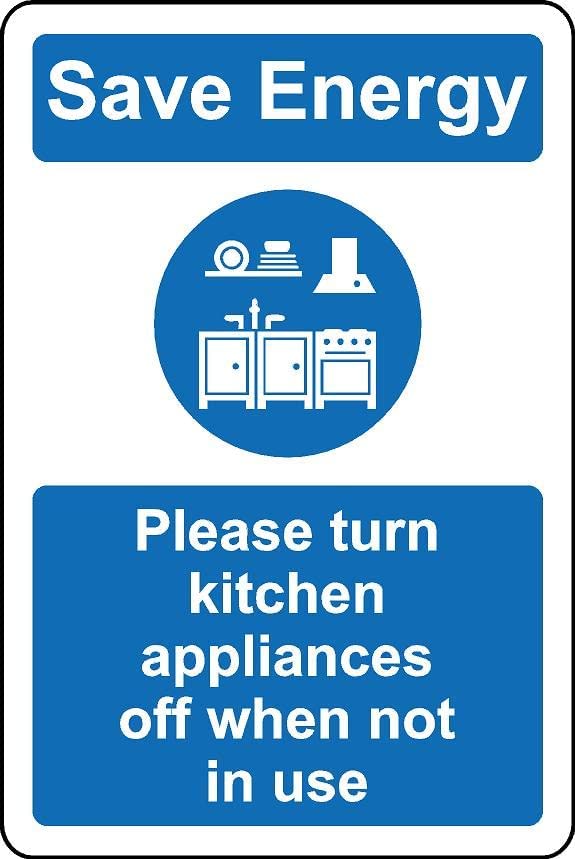

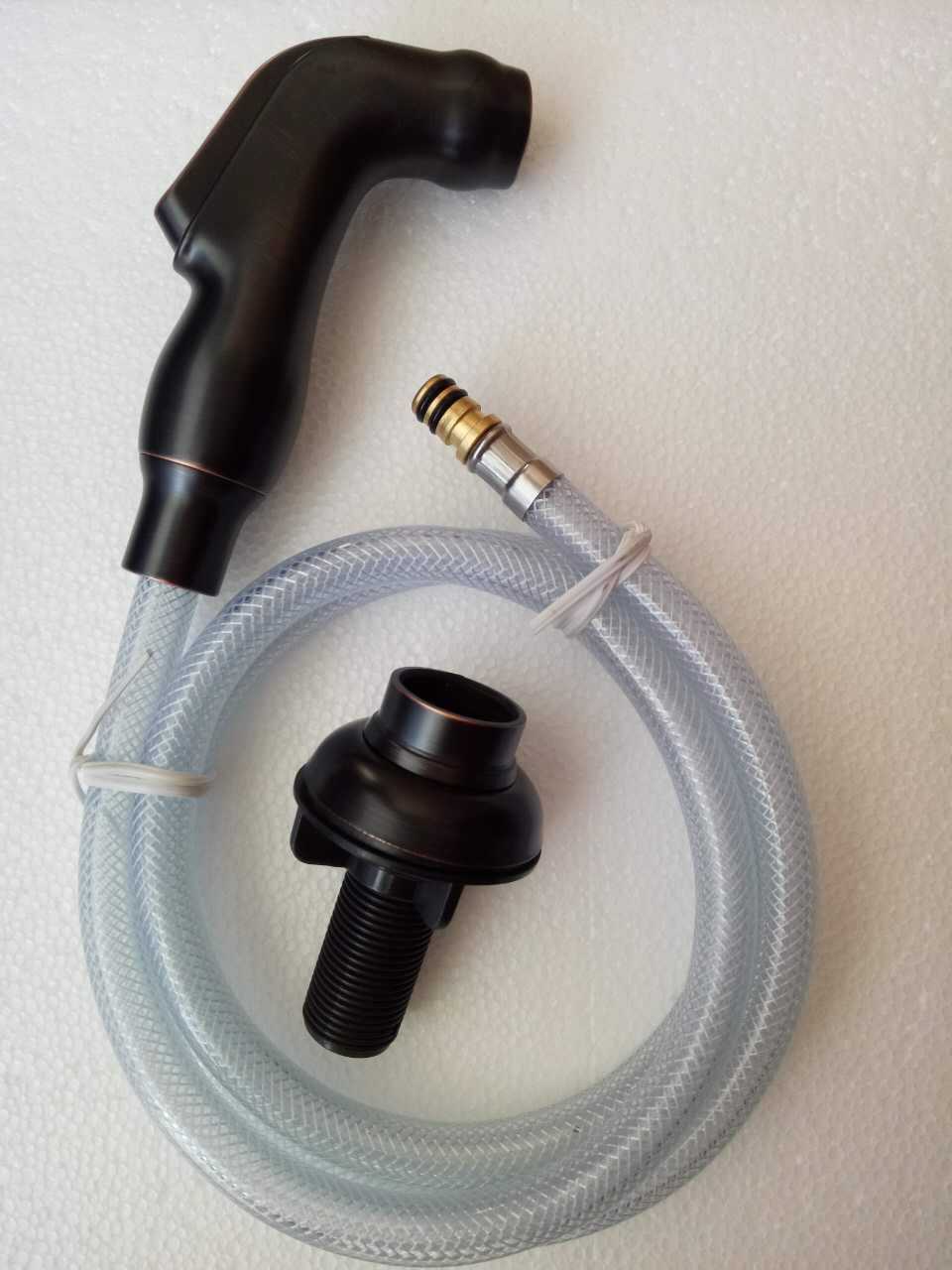
:max_bytes(150000):strip_icc()/sink-pipe-under-wash-basin-119001607-6f28aec4c66944efb7a9a38cb622ab8b.jpg)
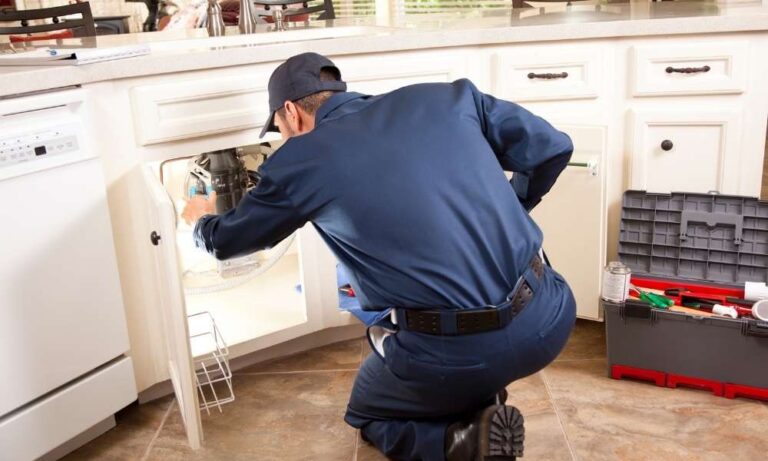

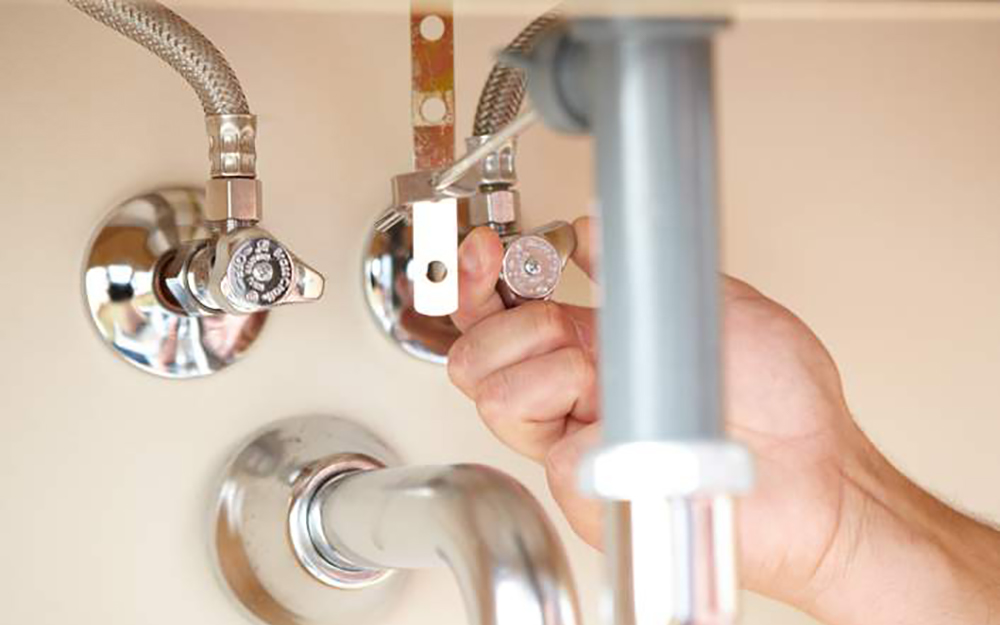




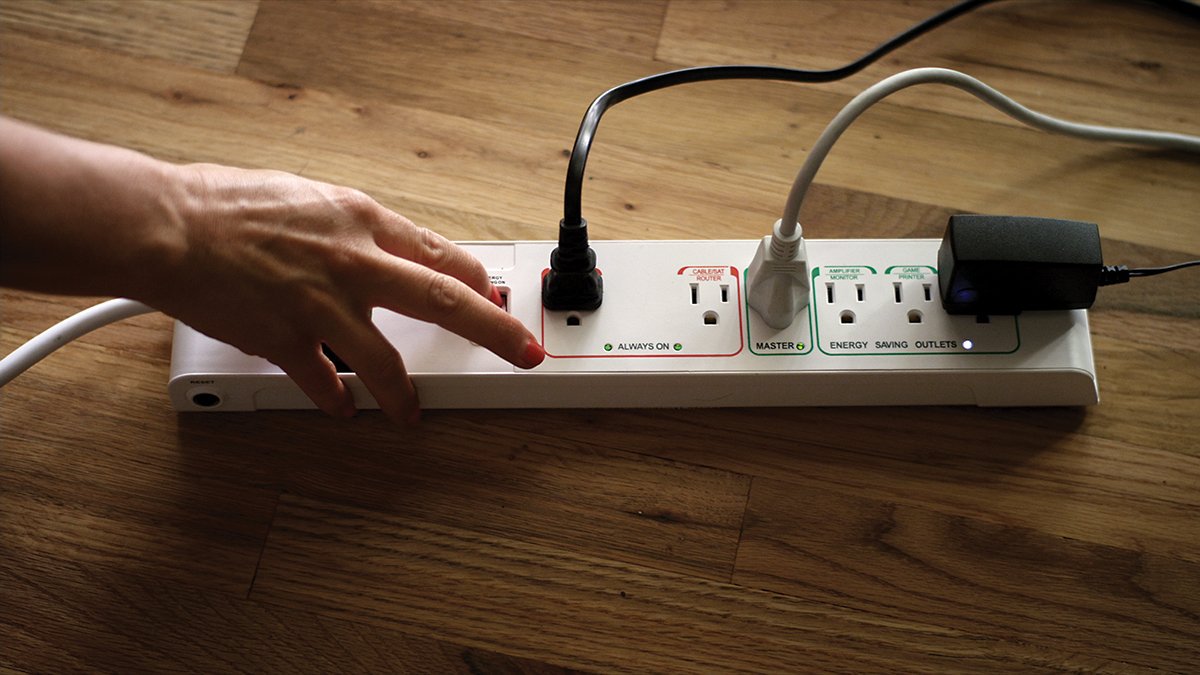
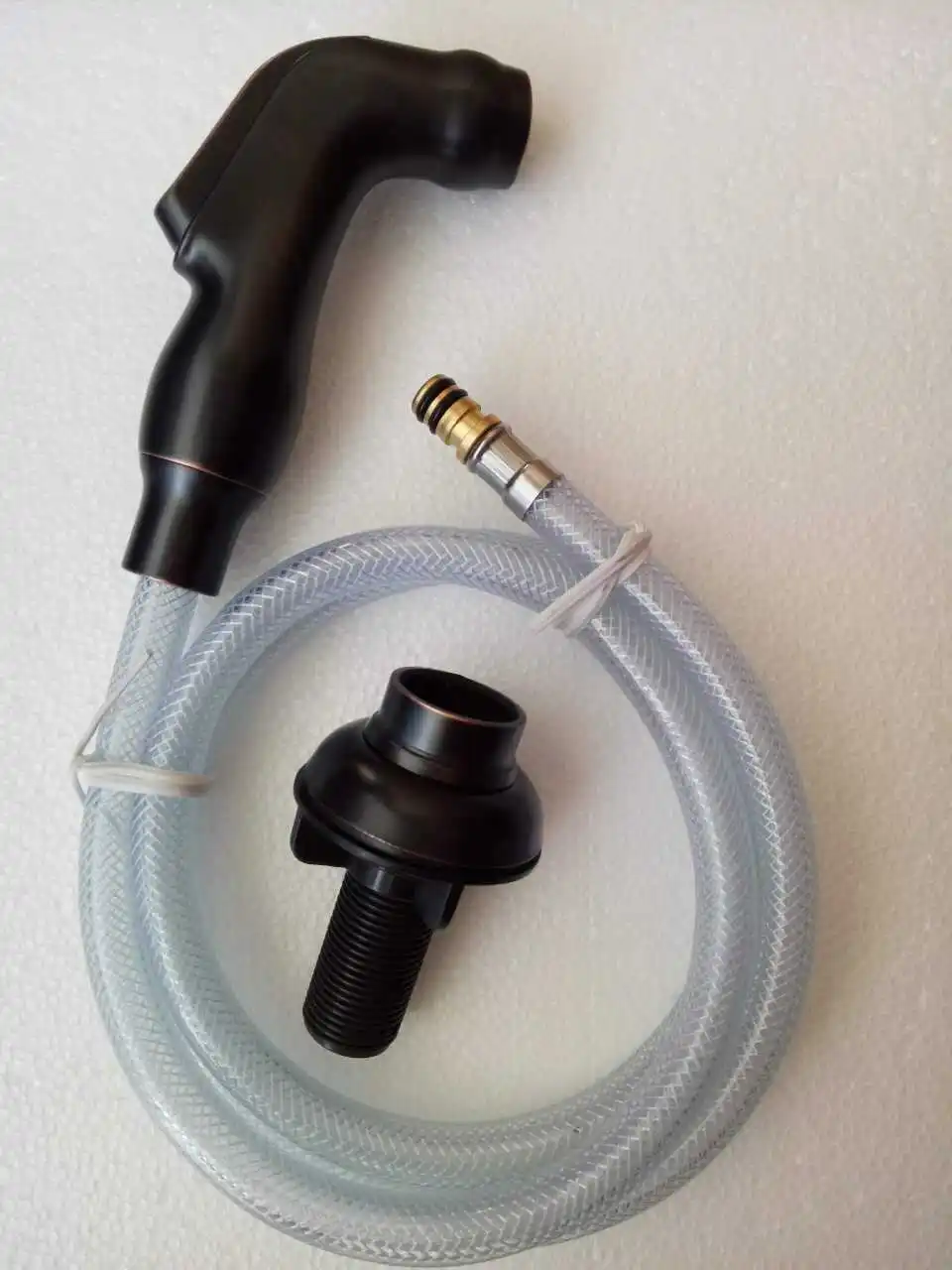
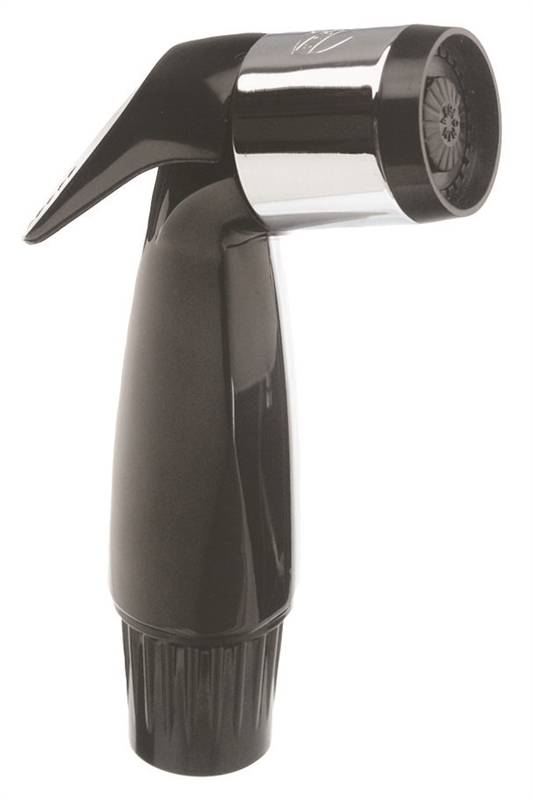

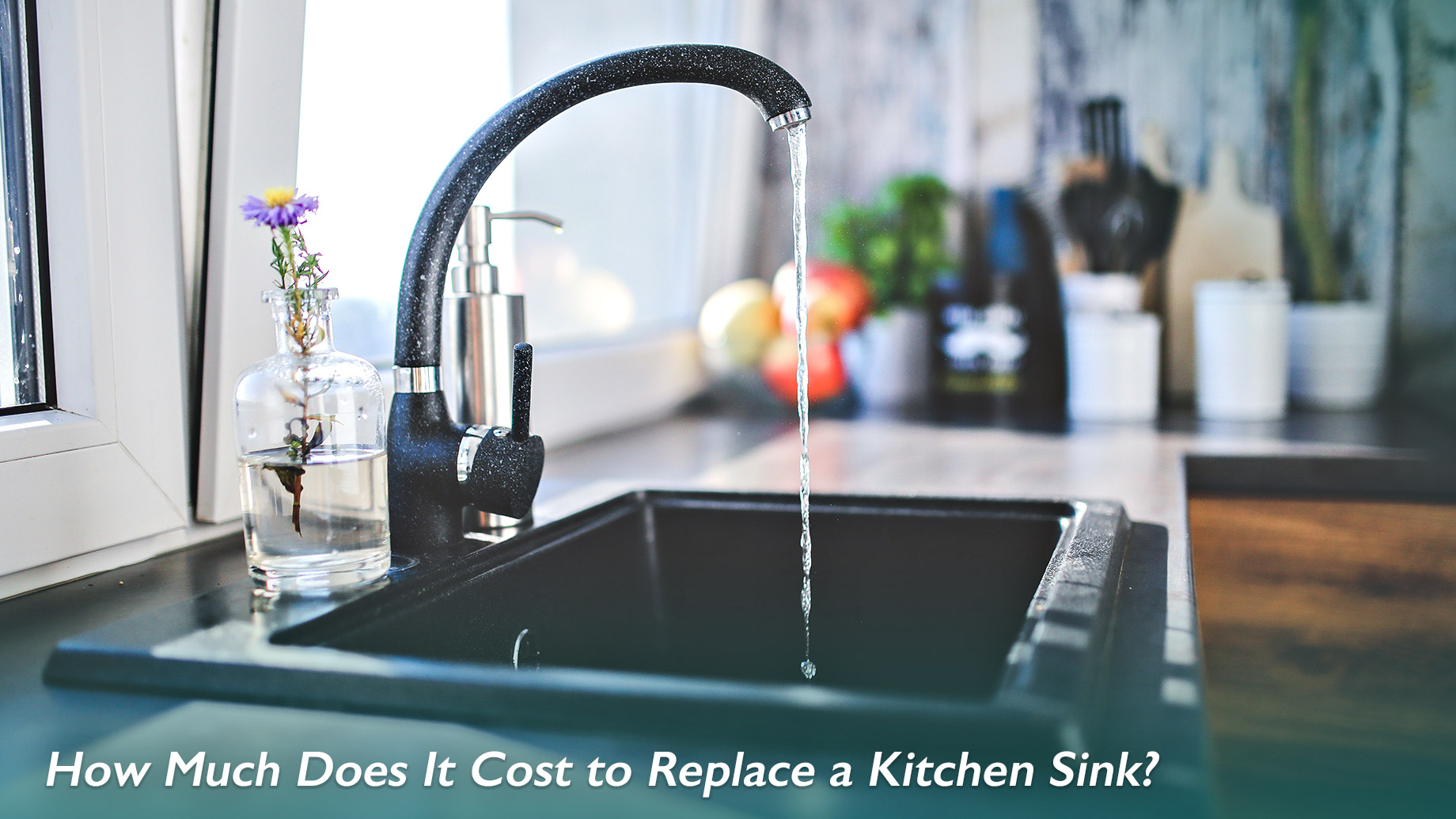
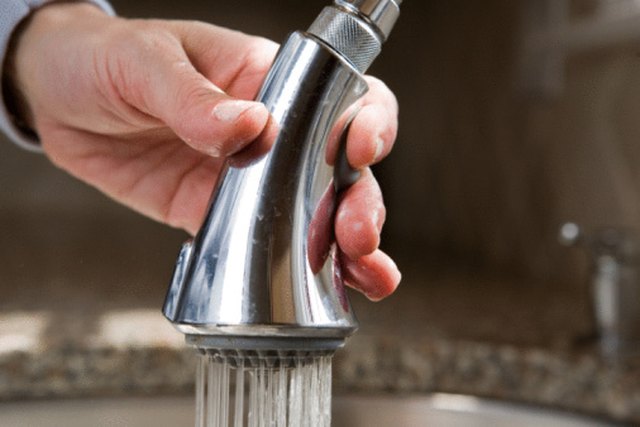


















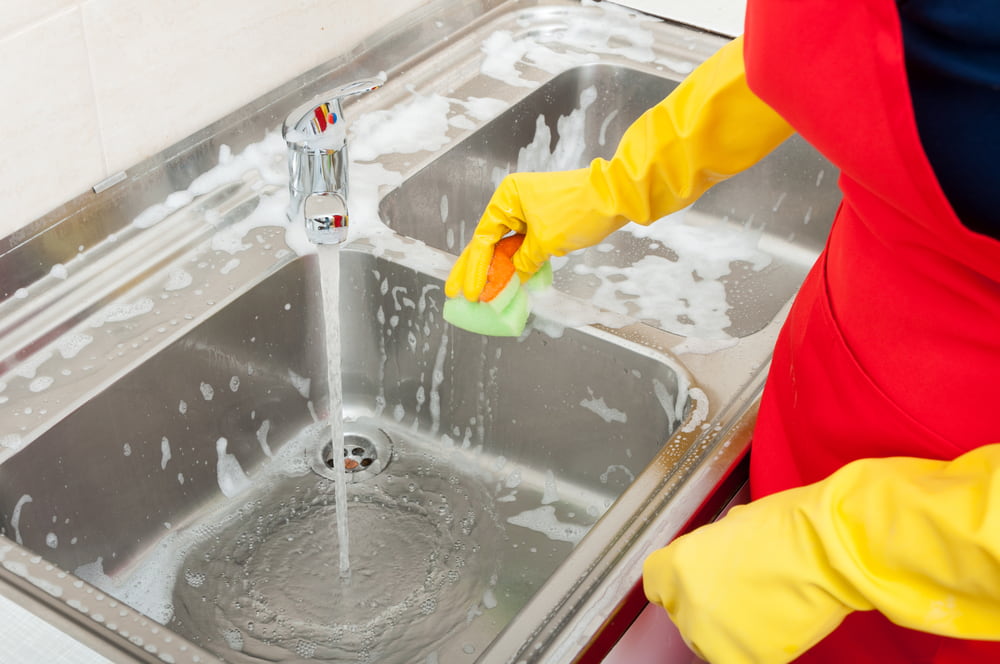





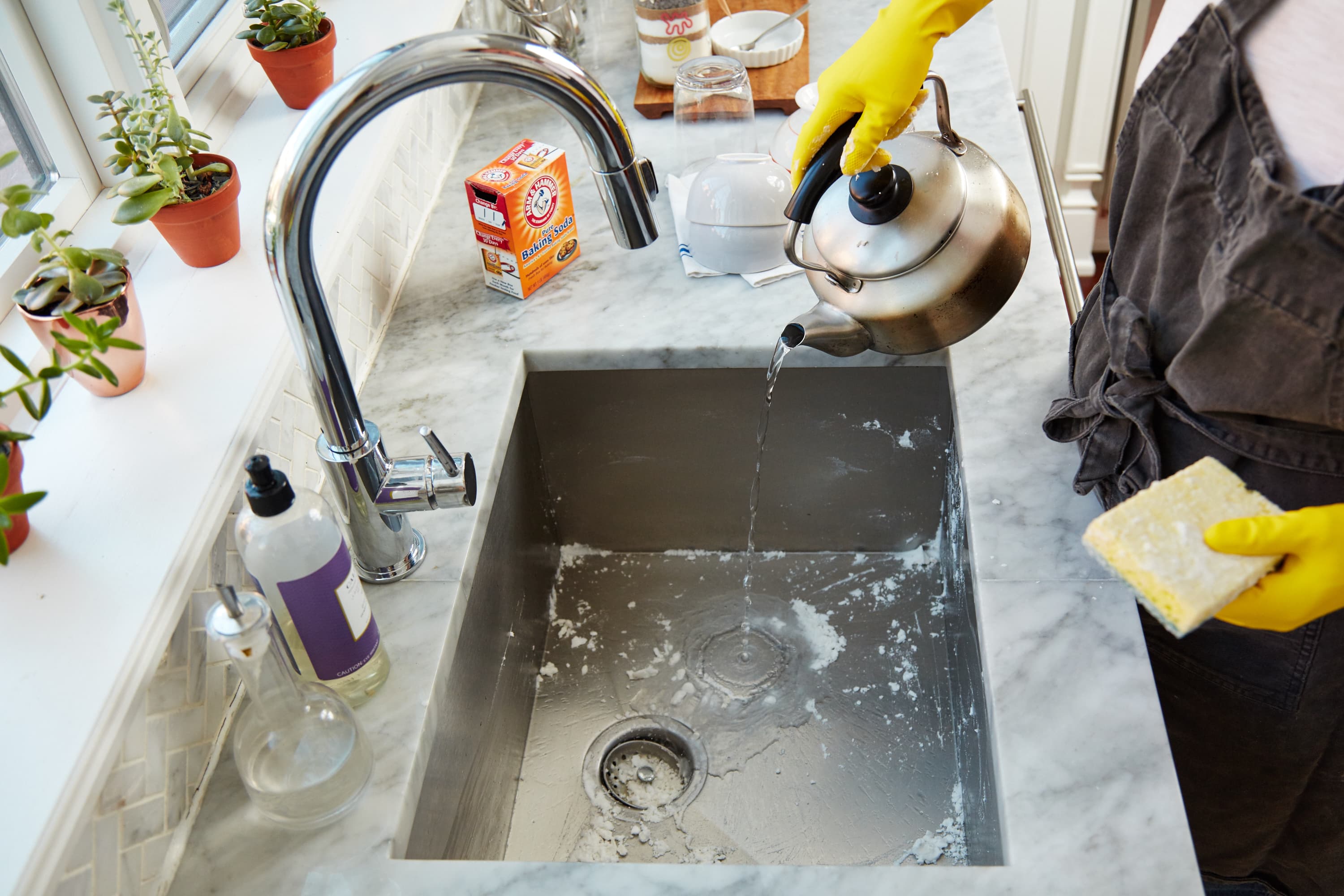






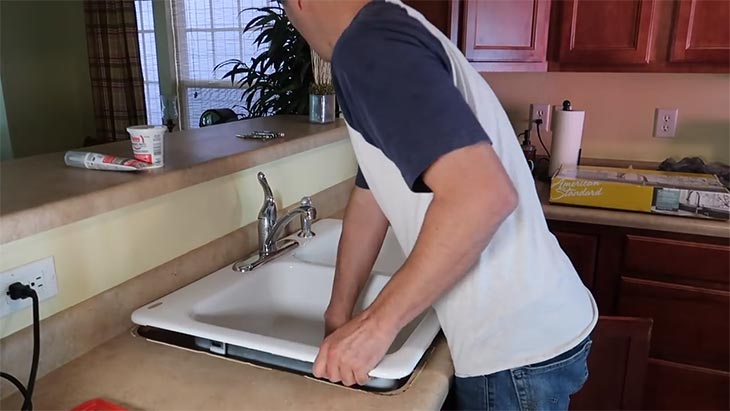






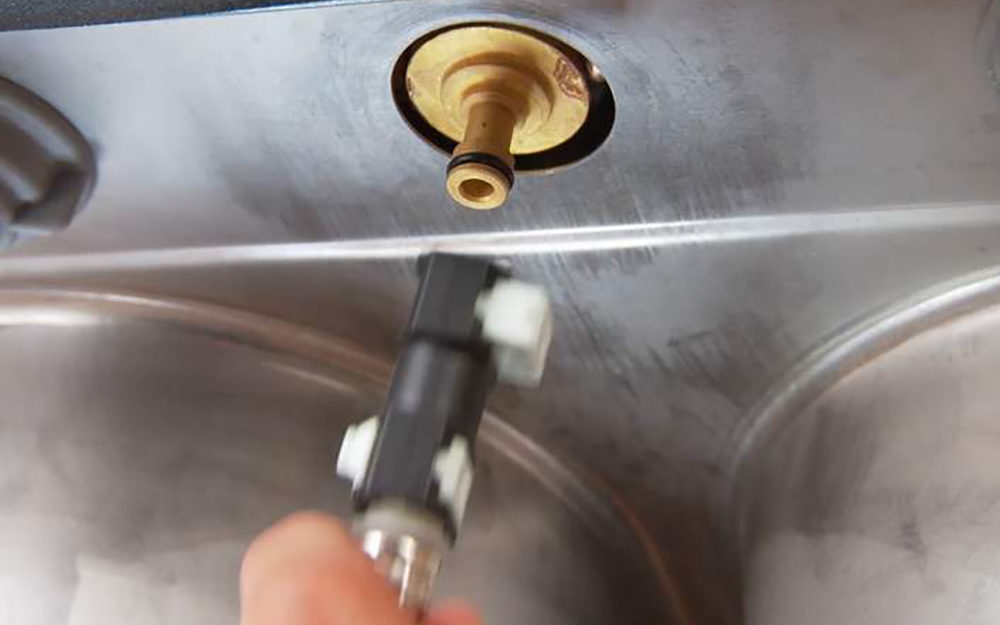


:no_upscale()/cdn.vox-cdn.com/uploads/chorus_asset/file/19495086/drain_0.jpg)







